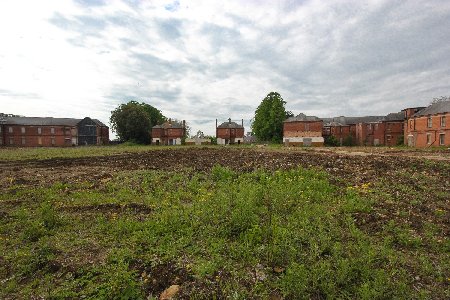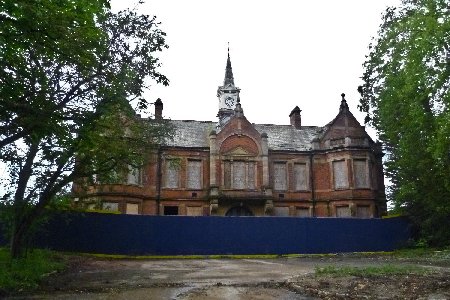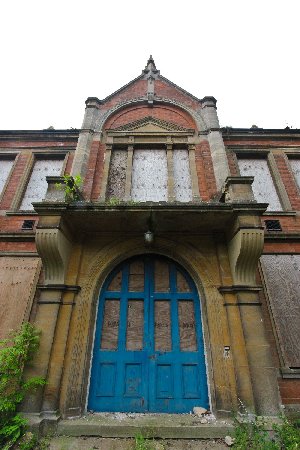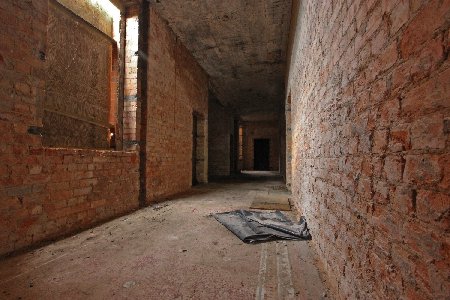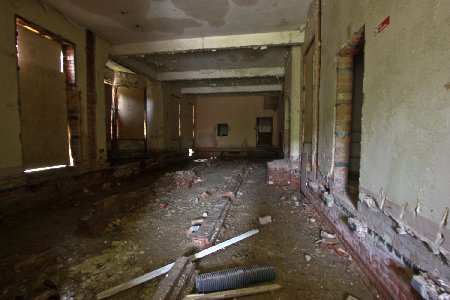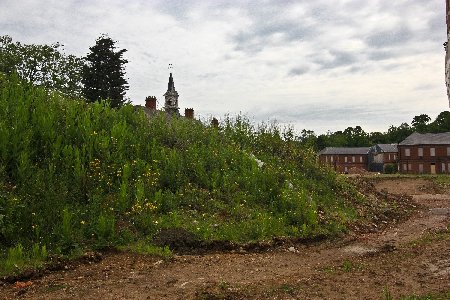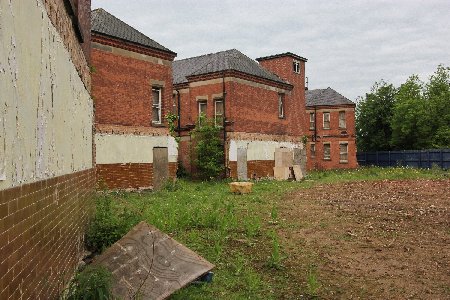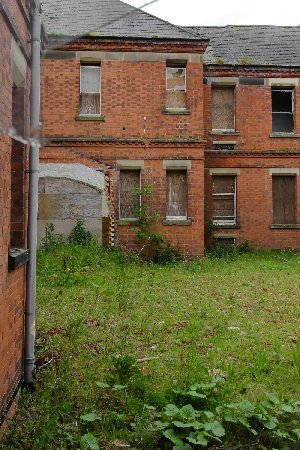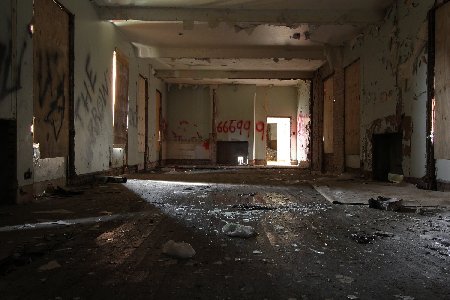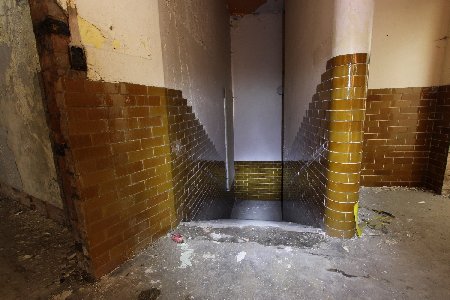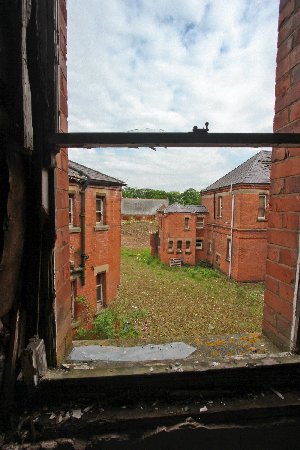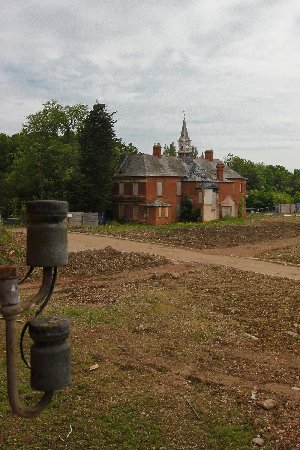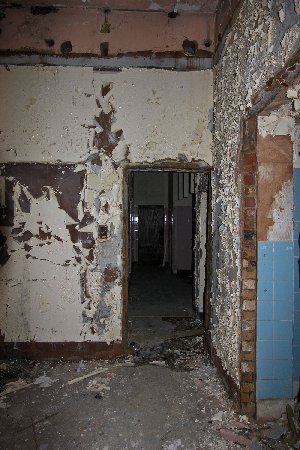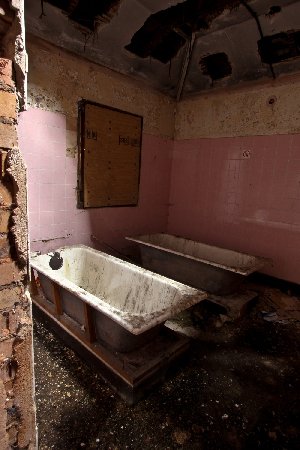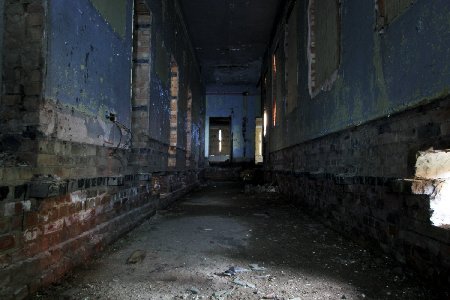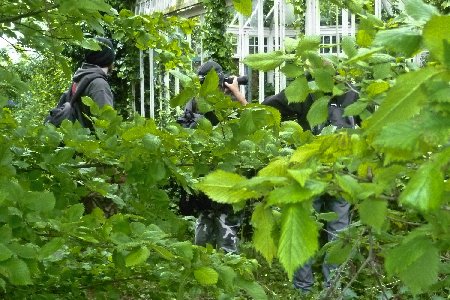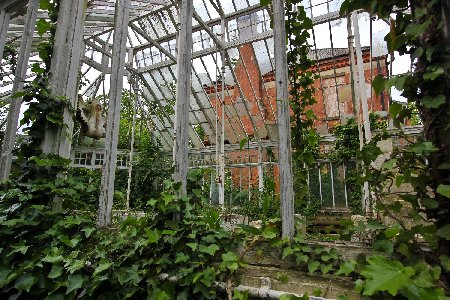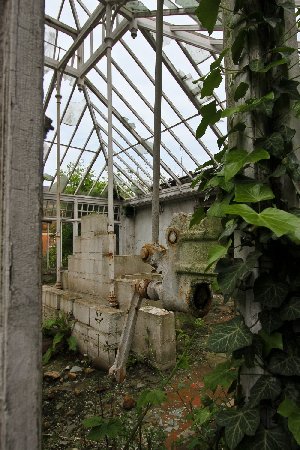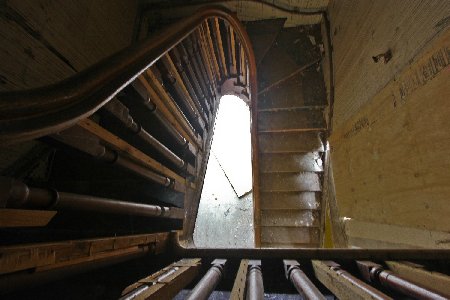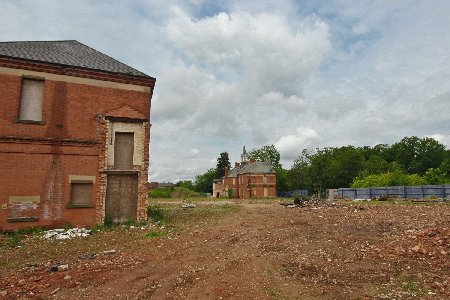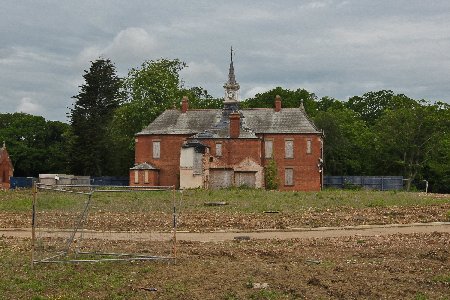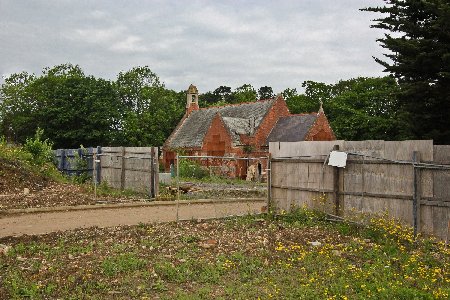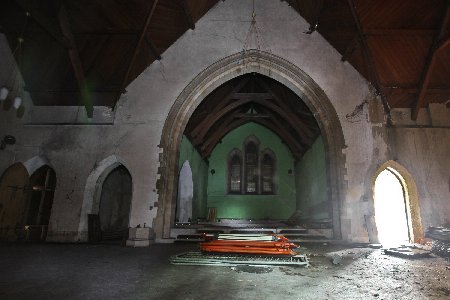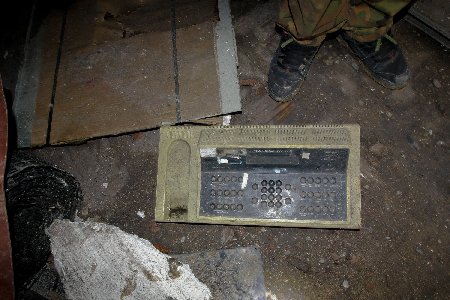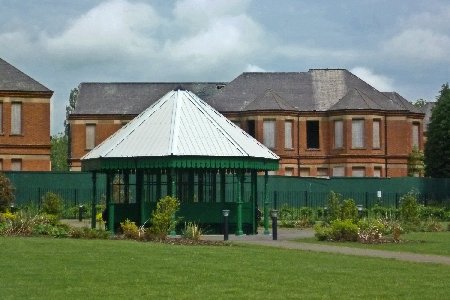|
A little of Kesteven's history... Rauceby Hospital was originally named Kesteven County Asylum. Building work started in 1897 and it was completed and the asylum opened for patients in 1902 at a cost of £156,789. It was originally intended for 420 patients and housing for the staff was constructed on site. Wards were deliberately sited such that they would be south facing in order to benefit from the maximum sun light available. Although the asylum was state of the art for it's time, being lit throughout with electricity, the lights were only turned on for a maximum of two hours per day necessitating the staff to use lanterns when moving around after dusk! The dormitory wards were strictly segregated with male patients to the east and female patients to the west, and further segregation was applied within these areas dependant upon patient diagnosis. The male wards were named after trees: Sycamore, Elm, Rowan, Cedar, Willow, Hazel and Maple, and the female wards were named after flowers: Rosemary, Wisteria, Syringa, Camillia, Heather, Mimosa and Lavendar. The sub divisions of diagnosis were: Sick and Infirm, Epileptics, Recent and Acute, and finally Working Patients. Each ward was divided into dormitories, day rooms, dressing rooms and an ablutions/bath block. There was a large recreation hall built in the middle of the ward blocks together with a 700 seat theatre, and a small chapel was sited to the north beyond the admin block. Kesteven, like most asylums of this period, had a working farm which was tended to by the patients, and a large workshop area with buildings where plumbing, carpentry, upholstery, brick laying, tailoring, and shoe repair, were all taught to male patients who were in the process of rehabilitation ready for discharge back into society. Female patients were employed in the laundry, wash houses, ironing rooms and a sorting room. There was another feature at Kesteven too which is common to almost all asylums of this period - an enormous water tower. Kesteven's was 100 feet high and could hold 37,200 gallons in two tanks. Two large airing courts were built to the south of the ward blocks with strict sex segregation between them. Each had a large circular pagoda set in the centre of the lawns and garden to afford shelter in inclement weather, and the whole was securely fenced to prevent patients attempting to escape. Sadly it was common practise in asylums of that time for the patients to be wakened, clothed and fed, and then ignominiously thrown out of the wards onto the airing courts and the ward doors locked behind them, irrespective of the weather. This cruel practise carried on at many asylums well into the 1970s; indeed it was not stopped until the investigations into the mental health care system in the early 1970s. During The Great War of 1914 - 19 patient numbers at Kesteven grew due to the fact that so many other asylums had been taken over by the military for use as hospitals for wounded soldiers. It was not until a couple of years after the armistice that numbers returned back to anything like normal. Sadly though so many soldiers had been terrifically traumatised by their experiences in the trenches that a huge proportion of the male patients remaining in the asylum after the war were shell shock cases. By 1939 admissions had reached an all time high, but the hospital coped well having become a self sufficient little community. Patients attended regular dances and cinema shows within the recreation hall, and also attended several sports days throughout the year. On Sundays a church parade was held and a male staff football team was formed, attracting hundreds of spectators for every match.
In a sort of pre-echo of what has happened at almost every Victorian asylum in Britain since, and by accident rather than at the hands of vandalistic chavs, the main hall burnt down in 1947 after a Whit Monday Ball, and this accident marked the end of the RAF's residency with the NHS taking over the site the following year, renaming it Rauceby Hospital in the process. By 1958 the total number of patients in the hospital had risen to a peak of 590, but after that date numbers began to fall. In the last years of it's use as a mental hospital, patients were progressively reintroduced back into society under the government's Care in the Community scheme and eventually the hospital closed it's doors in 1998. The old RAF Burns Unit was situated in Orchard House, which was built alongside the hospital orchard, and this building was the last part of the site to be used by the NHS as offices for the former Lincolnshire South West Primary Care Trust after the closure of the hospital. The medical isolation unit built on the western edge of the site was never used as such; instead it housed the patients who worked on the farm, and it currently functions as a 12-bed in-patient unit for youngsters aged 12 to 18 years under the control of the Lincolnshire Partnership NHS Foundation Trust. After standing unused and, with the main building in a rapidly deteriorating state, David Wilson Homes bought the site and began redevelopment work in 2004. Following public consultation, the site and its surroundings (including Rauceby railway station) were officially renamed Greylees, although the developer continues to refer to the housing development as De Vessey Fields.
|
 We visited St. John's
Asylum in Lincoln early in the morning on Queen Elizabeth's Diamond
Jubilee Bank Holiday of June 2012, but after only about an
hour wandering around inside the buildings we were disturbed by security and had to move on. Not really knowing
this area too well we opted to head across to another former Victorian asylum
quite near by in Rauceby, which is known as Kesteven. The asylum site has been
reduced to rubble with the exception of a few ward blocks, admin and the chapel,
and with a
distinct feeling of deja vu we found that every remaining building has been gutted
internally to leave a shell which the developers will eventually convert
into luxury apartments, exactly as they have done at St. Mary's Asylum up near Sunderland
which we visited about this time in 2011.
We visited St. John's
Asylum in Lincoln early in the morning on Queen Elizabeth's Diamond
Jubilee Bank Holiday of June 2012, but after only about an
hour wandering around inside the buildings we were disturbed by security and had to move on. Not really knowing
this area too well we opted to head across to another former Victorian asylum
quite near by in Rauceby, which is known as Kesteven. The asylum site has been
reduced to rubble with the exception of a few ward blocks, admin and the chapel,
and with a
distinct feeling of deja vu we found that every remaining building has been gutted
internally to leave a shell which the developers will eventually convert
into luxury apartments, exactly as they have done at St. Mary's Asylum up near Sunderland
which we visited about this time in 2011. 
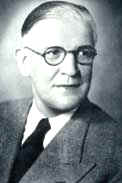 But
by 1939 war clouds again loomed on the horizon. In
1940 the building was taken over by the
But
by 1939 war clouds again loomed on the horizon. In
1940 the building was taken over by the
